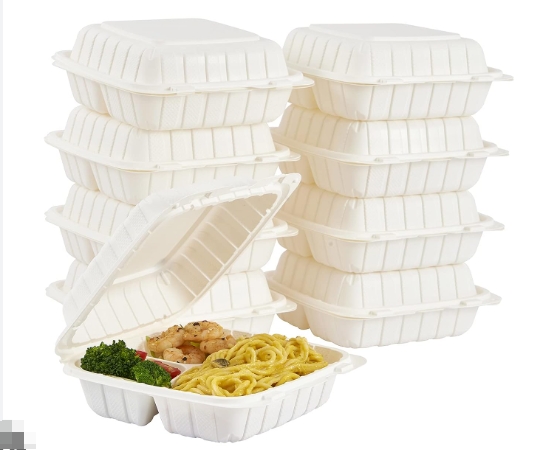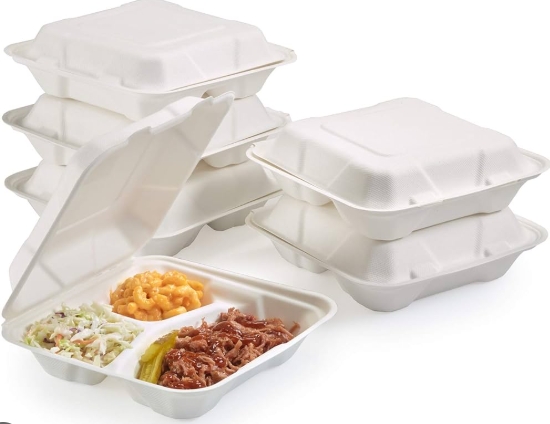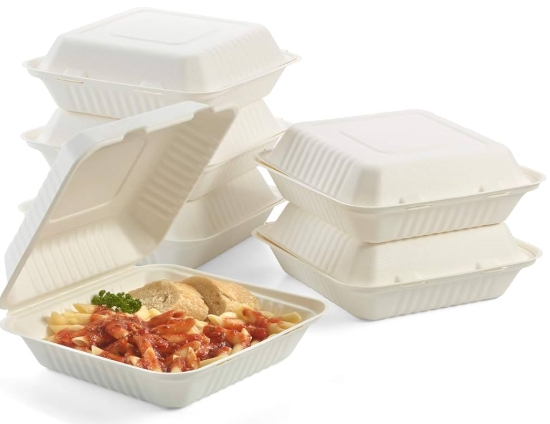
Content Menu
● What Is a Plastic Clamshell Box?
>> Key Characteristics
● What Is a Paperboard Box?
>> Key Characteristics
● Plastic Clamshell Box Vs Paperboard Box: Core Comparison
>> Product Visibility
>> Product Protection and Durability
>> Environmental Sustainability
>> Branding and Aesthetic Presentation
>> Cost and Logistics
>> Customer Experience
>> Security and Tamper Resistance
● Industry Use Cases
>> Electronics and Tools
>> Personal Care and Cosmetics
>> Food and Beverages
>> Pharmaceuticals
● Choosing the Right Option Based on Your Business Needs
● Innovations Shaping the Future
>> Advancements in Clamshell Packaging
>> Improvements in Paperboard Technology
● Practical Transition Tips
● Conclusion
● FAQ
>> 1. What are the key products best suited for plastic clamshell packaging?
>> 2. Is paperboard packaging completely eco-friendly?
>> 3. Can paperboard boxes be customized for luxury branding?
>> 4. Does plastic packaging always cost more than paperboard?
>> 5. What happens if I need both visibility and sustainability?
Packaging plays a crucial role in how a product is perceived, protected, and delivered. Businesses across industries must carefully evaluate their packaging choices to ensure compatibility with their products, branding, sustainability initiatives, and customer experience. Among the numerous packaging types available, plastic clamshell boxes and paperboard boxes stand out due to their widespread use and contrasting characteristics.
Making the right decision between these two can influence your brand reputation, logistics efficiency, product safety, and environmental impact. This guide offers an in-depth comparison to help you determine which packaging solution is better suited for your product.

What Is a Plastic Clamshell Box?
Plastic clamshell boxes are hard-shell containers made from thermoformed plastic materials. These boxes are designed with two identical or mirror-image halves connected by a hinge, resembling the natural structure of a clamshell. When closed, they form a secure enclosure that typically features locking mechanisms or heat seals.
Key Characteristics
- Manufacturing Material: Commonly made from PET, PVC, or similar plastics.
- Functionality: Protects products while allowing consumers to view them through the clear exterior.
- Security: Offers tamper resistance, which is particularly beneficial in retail environments.
- Application: Often used for electronics, cosmetics, hardware, tools, and food items.
- Brand Presentation: Relies on inserts or stickers for branding.
What Is a Paperboard Box?
Paperboard boxes are packages made from thick, paper-based material with the ability to be folded and formed into various structural shapes. Known for being lightweight, cost-effective, and environmentally friendly, they are used across a wide range of industries.
Key Characteristics
- Material: Crafted from processed paper pulp; often sourced from recycled fibers.
- Design Versatility: Can be printed, folded, cut, and finished with coatings.
- Sustainability: Easily biodegradable and recyclable.
- Applications: Widely used in packaging food items, pharmaceuticals, cosmetics, gifts, and more.
- Branding Surfaces: Offers large printable areas for logos, messages, and graphics.
Plastic Clamshell Box Vs Paperboard Box: Core Comparison
To determine which packaging is better, it's vital to evaluate them based on fundamental factors such as visibility, durability, environmental impact, branding capability, and economic cost.
Product Visibility
Plastic clamshells provide full product visibility, making them ideal for showcasing what's inside. Consumers can inspect product attributes like color, shape, or accessories without opening the packaging. This factor is especially relevant in categories where visual appeal drives purchase decisions, such as electronics and toys.
Paperboard boxes typically do not allow direct product visibility unless custom-designed with transparent windows. While adding such viewing windows is possible, it raises production complexity and cost.
Product Protection and Durability
Plastic packaging excels when it comes to durability. It offers superior resistance to crushing, moisture, and external contaminants. In transit or crowded retail shelves, this form of packaging provides excellent protection.
Paperboard is less durable, especially in damp or rugged environments. While advanced versions of paperboard with protective coatings do exist, they rarely match the long-term protection of rigid plastic.
Environmental Sustainability
Environmental impact is a growing concern among both manufacturers and consumers. Paperboard wins the sustainability battle due to its biodegradable nature and ease of recycling across most regions. It can also be reused or upcycled creatively by consumers.
Plastic clamshells, on the other hand, often end up in landfills. Recycling them proves difficult due to their complex shapes, food residue, or the combination of different plastics. Some regions do not accept certain types of plastic for recycling, making this packaging much less environmentally friendly.
Branding and Aesthetic Presentation
Paperboard packaging offers immense flexibility in design. Brands can use a wide range of printing technologies, from simple logos to intricate full-color patterns. Matte finishes, foil stamping, embossing, and textured surfaces add to its premium appeal.
Plastic packaging tends to lag in the branding department. Most rely on printed inserts or adhesive labels placed inside the clamshell. While some clamshells can be customized in shape, there's limited scope for elaborate branding unless the production volume is high.
Cost and Logistics
From a cost perspective, paperboard packaging is generally more budget-friendly. It is efficient to manufacture, especially at lower volumes, and can be shipped flat, saving considerable storage and shipping expenses.
Plastic clamshell packaging tends to be more expensive to manufacture due to mold creation and the energy-intensive nature of thermoforming. Furthermore, its rigid design means it occupies more space during storage and freight, adding to the overall cost.
Customer Experience
Consumers often struggle to open plastic clamshell containers, especially those that are sealed around the edges. This phenomenon, sometimes humorously referred to as “wrap rage,” can leave a negative impression on the buying experience.
Paperboard boxes typically offer a superior unboxing experience. They can be easily opened and resealed. Moreover, they allow creative unboxing strategies, which have become popular in marketing, especially in e-commerce and influencer-driven industries.
Security and Tamper Resistance
Plastic clamshell boxes are often preferred for high-value items due to their tamper-resistance. Some versions even come with theft-deterrent features like heat seals or locks. This makes them dependable for items placed on high-traffic retail shelves.
Paperboard, while capable of being sealed or taped, doesn't usually offer the same level of protection. However, innovative designs like tamper-evident tabs, glued seams, or hidden openings can improve security to some extent.

Industry Use Cases
Electronics and Tools
Plastic packaging is a natural choice in these categories where seeing the item and guaranteeing protection is important. The packaging also helps prevent theft and damage before purchase.
Personal Care and Cosmetics
Both packaging types are used here, but paperboard is more aligned with brands focused on natural or organic branding. Its environmentally friendly nature appeals to health-conscious shoppers.
Food and Beverages
Paperboard is widely used for cereals, frozen foods, and meal kits. Clamshells are often seen in produce sections or used for baked items where visual appeal entices buyers.
Pharmaceuticals
Paperboard boxes are popular because of their ease of labeling and regulation compliance. Plastic clamshells may be used for medical instruments or single-use devices requiring strict protection.
Choosing the Right Option Based on Your Business Needs
When deciding between plastic clamshell or paperboard boxes, it's crucial to evaluate:
- Your Product Type: Is it fragile, perishable, or high-value?
- Branding Priorities: How important are design aesthetics and messaging?
- Distribution Channels: Will the product be displayed in-store, shipped online, or both?
- Environmental Goals: Do your clients care about sustainability?
- Budget Factors: Can your business absorb higher packaging and shipping costs?
Each industry and brand may arrive at a different conclusion based on how these elements weigh.
Innovations Shaping the Future
Advancements in Clamshell Packaging
Emerging trends include the use of biodegradable plastics, hybrid packages combining cardboard and plastic, and new manufacturing techniques that reduce material use. Grip-friendly features and frustration-free packaging seals are also gaining popularity.
Improvements in Paperboard Technology
Modern paperboard is evolving with water-resistant finishes, modular construction, and better durability for shipping-heavy applications. Innovations in digital printing allow short runs with complete customization, ideal for direct-to-consumer brands.
Practical Transition Tips
If you're considering switching from plastic to paperboard—or the reverse—it's essential to:
- Study your existing logistical requirements and cost structure.
- Conduct sample testing for durability and presentation.
- Make sure the new packaging is compatible with your retail or e-commerce strategy.
- Get feedback from end-users before full deployment.
- Partner with a custom packaging provider for optimal design execution.
Conclusion
The comparison between plastic clamshell packaging and paperboard boxes reveals essential differences in cost, sustainability, functionality, and user experience. While plastic clamshells offer robust protection and high visibility, they fall short in environmental responsibility and branding capabilities. Paperboard boxes, with their design flexibility and eco-friendliness, deliver a modern solution for most consumer goods, especially in an era leaning toward sustainability.
Your final packaging choice should reflect not only the nature of your product but also the values of your brand and the expectations of your customers.

FAQ
1. What are the key products best suited for plastic clamshell packaging?
Plastic clamshells are best for electronics, small tools, toys, and other products that benefit from high visibility, firm protection, and tamper resistance.
2. Is paperboard packaging completely eco-friendly?
While paperboard is far more sustainable than most plastics, its environmental friendliness depends on sourcing. When made from recycled or responsibly managed pulp, it is highly eco-conscious.
3. Can paperboard boxes be customized for luxury branding?
Yes. Paperboard boxes can be finished with gloss, matte, UV coating, foil stamping, and embossing to give a premium, high-end feel suitable for luxury or gift items.
4. Does plastic packaging always cost more than paperboard?
Not always. At high volumes with standardized molds, plastic packaging can be competitively priced. However, when factoring logistics and handling, paperboard is often more economical.
5. What happens if I need both visibility and sustainability?
Some hybrid packaging solutions combine a paperboard body with a plastic window, giving you the best of both worlds. This option works well for many retail products, particularly where first impressions count.

















